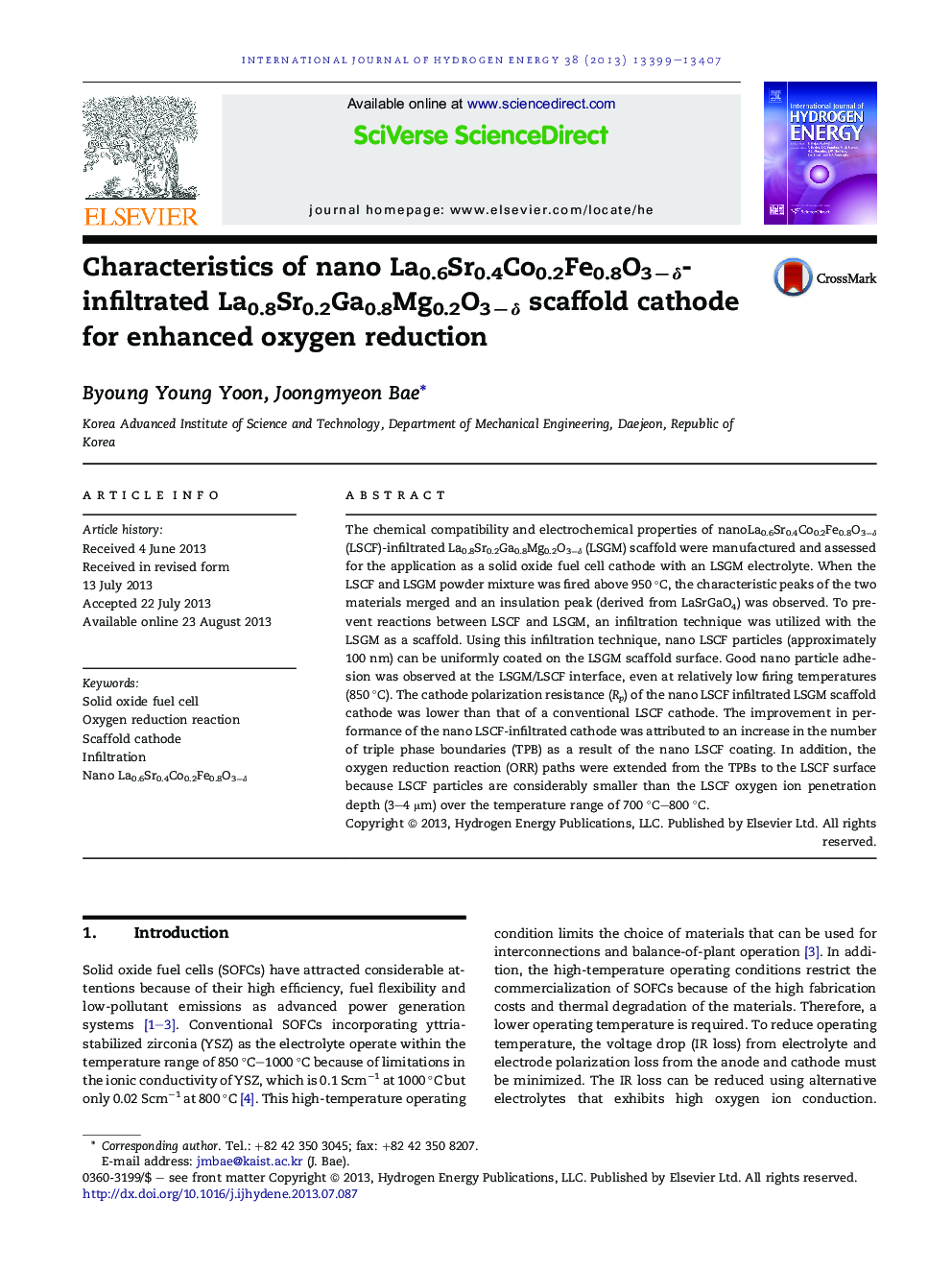| Article ID | Journal | Published Year | Pages | File Type |
|---|---|---|---|---|
| 1273346 | International Journal of Hydrogen Energy | 2013 | 9 Pages |
•We investigated a nano LSCF-infiltrated LSGM scaffold cathode.•Nano LSCF particles (approximately 100 nm) were uniformly coated on LSGM surface.•Formation of undesired phases was prevented by infiltration technique.•The Rp of the cell was 0.02 and 0.69 Ω cm2 at 800 and 600 °C, respectively.•Oxygen reduction reaction (ORR) of cathode was enhanced due to expansion of ORR region.
The chemical compatibility and electrochemical properties of nanoLa0.6Sr0.4Co0.2Fe0.8O3−δ (LSCF)-infiltrated La0.8Sr0.2Ga0.8Mg0.2O3−δ (LSGM) scaffold were manufactured and assessed for the application as a solid oxide fuel cell cathode with an LSGM electrolyte. When the LSCF and LSGM powder mixture was fired above 950 °C, the characteristic peaks of the two materials merged and an insulation peak (derived from LaSrGaO4) was observed. To prevent reactions between LSCF and LSGM, an infiltration technique was utilized with the LSGM as a scaffold. Using this infiltration technique, nano LSCF particles (approximately 100 nm) can be uniformly coated on the LSGM scaffold surface. Good nano particle adhesion was observed at the LSGM/LSCF interface, even at relatively low firing temperatures (850 °C). The cathode polarization resistance (Rp) of the nano LSCF infiltrated LSGM scaffold cathode was lower than that of a conventional LSCF cathode. The improvement in performance of the nano LSCF-infiltrated cathode was attributed to an increase in the number of triple phase boundaries (TPB) as a result of the nano LSCF coating. In addition, the oxygen reduction reaction (ORR) paths were extended from the TPBs to the LSCF surface because LSCF particles are considerably smaller than the LSCF oxygen ion penetration depth (3–4 μm) over the temperature range of 700 °C–800 °C.
